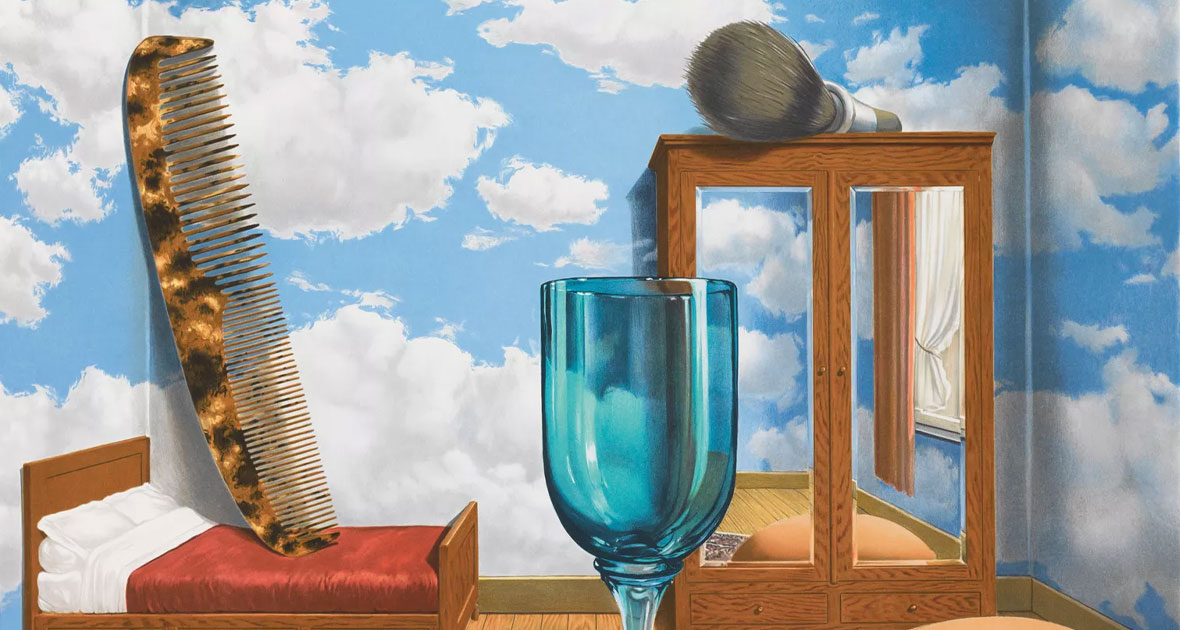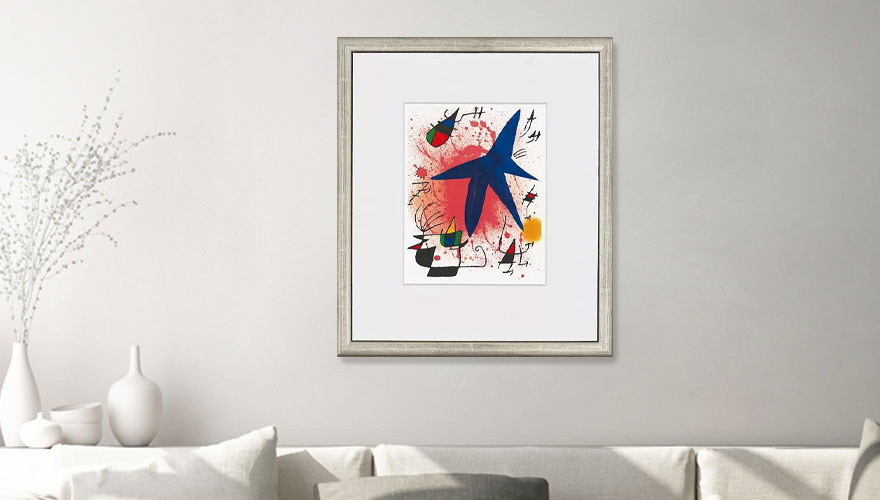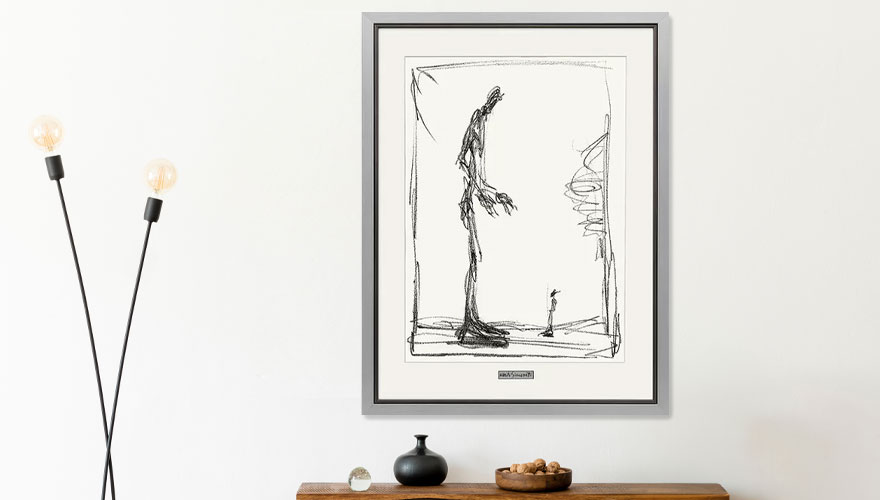
Surrealism: Art That Seems to Come From Another World
The art of Surrealism seems to come from a bizarre parallel world: It depicts unreal scenes that appear to originate from dreams, visions, or states of intoxication. In these sometimes absurd pictorial compositions, bizarre creatures and enigmatic fantasy figures meet deformed objects. Reality and logic are completely suspended. The works can be absurd, mysterious, and disturbing - but also poetic and humorous.
Through their art, the surrealists aimed, at the beginning of the 20th century, to create access to a world beyond visible reality. Often their works represented borderline experiences for the public, casting doubt on the perception of reality. Nevertheless - or perhaps precisely because of this - Surrealism would develop into one of the most significant styles in art history. Its imagery and philosophy continue to have an impact on the art world to this day.

Surrealism - Relevant and Popular for 100 Years
The history of Surrealism in painting began in Paris in the early 1920s. It was part of a larger movement that encompassed the entire art scene. In the French metropolis, a group of artists formed that included painters, photographers, writers, and filmmakers. The early surrealists included Max Ernst, Salvador Dalí, Joan Miró, Man Ray, Yves Tanguy, René Magritte, and Luis Buñuel. Their first exhibition took place in Paris in 1925.
The heyday of Surrealism lasted until around 1950, but it remained present and influential in the art world beyond that. It served as an inspiration for many other styles, such as various versions of abstract painting or Fantastic Realism. Surrealism even continues to captivate the public around 100 years later. Numerous works of Surrealism, for example, "The Persistence of Memory" by Salvador Dalí, "The Singing Fish" by Joan Miró or "The Son of Man" by René Magritte, are among the most famous motifs in art history. Exhibitions and museums dedicated to the artists of Surrealism today remain regular popular attractions.
The Human Psyche as a Source of Inspiration
The surrealists pursued a truly great goal with their philosophy: They wanted nothing less than to revolutionise the thinking of humanity. One of the fundamental ideas of Surrealism was that unconscious impulses should be given more importance than logic and rationality. They believed that true power lay in imagination, emerging from the depths of the human psyche. Only when the mind is freed from all the constraints of rational control do humans achieve higher realisation and artistic power.
Sigmund Freud's findings had a significant influence on the surrealists' theory. At this time, the Austrian psychologist presented his groundbreaking work on psychoanalysis. In his theory of depth psychology, he emphasised the importance of the subconscious, the unconscious, and dreams. The artists of Surrealism derived their principles from these ideas: The existence (and thus the perception) of reality was completely questioned.
At the same time, reality was no longer accepted as a reference point and source of artistic motifs. Instead, artists sought their inspiration in dreams, fantasies, states of intoxication, visions, or psychotic states. They saw their art as a vent through which wishes, urges, and suffering could be articulated unfiltered. In many fields of art, Surrealism gave rise to a form of "hyper-reality".

History of Surrealism: Two Different (Stylistic) Directions
On a theoretical level, the surrealists largely agreed on what they wanted to express with their art. However, this did not result in a uniform artistic form concept for surrealist pictures. Rather, two major trends were to develop within Surrealism. These differed primarily in their choice of motifs and pictorial objects.
In this respect, Veristic Surrealism (or Hyperrealistic Surrealism) still reveals a concrete reference to reality. The artists generally used real pictorial objects, but they often distorted or alienated them significantly. They also combined objects in ways that would never appear in the same context in reality. Surrealist features reveal various influences from previous epochs and artists, such as Hieronymus Bosch, Henri Rousseau, Giorgio de Chirico, Cubism and Dadaism. The combination of real objects and absurd pictorial compositions makes the art of Surrealism both very confusing and extremely fascinating. Reality and fiction can no longer be separated, and subjective perception is shaken.
Abstract Surrealism (also known as Absolute Surrealism), on the other hand, appears to be largely detached from reality. Here, the pictorial motifs arise exclusively from the free imagination and the subconscious. Artists such as Max Ernst or Joan Miró followed only their spontaneous inspiration in the artistic process. They intuitively painted abstract forms, patterns and structures or fantastical creatures and landscapes, often unrelated to reality. Even if you think you can recognise one object or another, the pictorial objects ultimately refuse to be clearly identified.
In Surrealism Art, the Artistic Process was Reinvented
The surrealists did not only break new ground with their motifs. They also scrutinised the entire artistic creative process - from ideation to techniques. Many saw their subconscious as the source of their creativity.
| What Was the Goal of Surrealists? The goal was to explore the potential in the subconscious and to articulate it as unadulterated as possible. Logic and rationality were considered hindrances and were to be largely excluded. Hence, the surrealists used various techniques to gain direct access to their psyche. |
To avoid altering pure inspiration through excessive thought, they experimented with various approaches. One of the most important techniques used by the Absolute Surrealists was "automatic writing". These artists followed their spontaneous associations and quickly put their inspiration on paper unfiltered. Some went even further, working in a semi-conscious state or under the influence of alcohol and drugs. Others even sought inspiration in neurotic and psychotic states.
Surrealism Art Characteristics: Experimenting with Techniques and Materials
The surrealists also broke new ground when it came to realising the motifs that came from the depths of their souls. They used familiar techniques such as painting with oil colours, drawings with pencils and charcoal and also lithographs. But they also searched for other artistic methods that gave them the freedom to express their world of ideas without being influenced.
Collage became an important Surrealism technique. Artists assembled a wide variety of objects such as fabrics, paper, and all kinds of other findings on wooden panels or cardboard. Both chance and the spontaneous and unconventional composition of the objects played an important role. Frottage follows a similar principle. In this technique, the surface structures of objects are transferred onto paper through tracing.
Even with grattage, the creation of pictures is not entirely arbitrary. Several layers of paint, such as oil colours or wax paints, are applied on top of each other. The contours of the pictorial objects are then scraped out with a sharp object, resulting in multi-layered, colourful lines and areas of colour.
Many of the techniques used in Surrealism are now part of the standard repertoire of fine art today.
